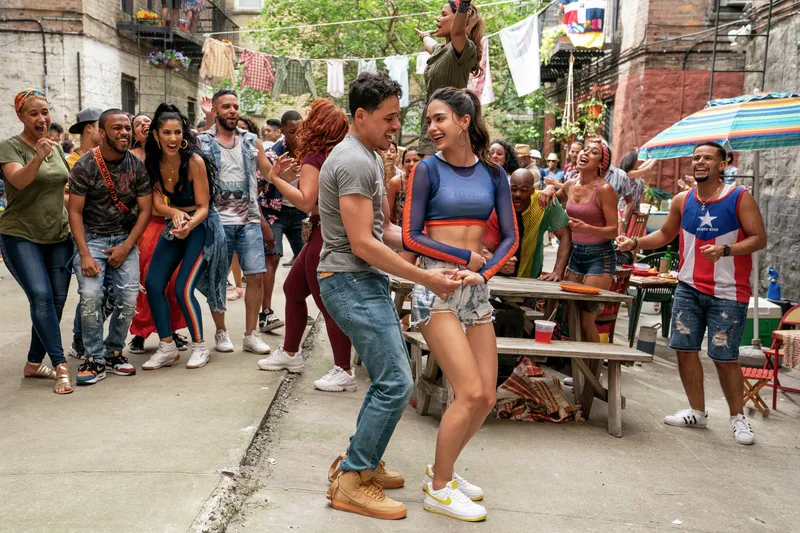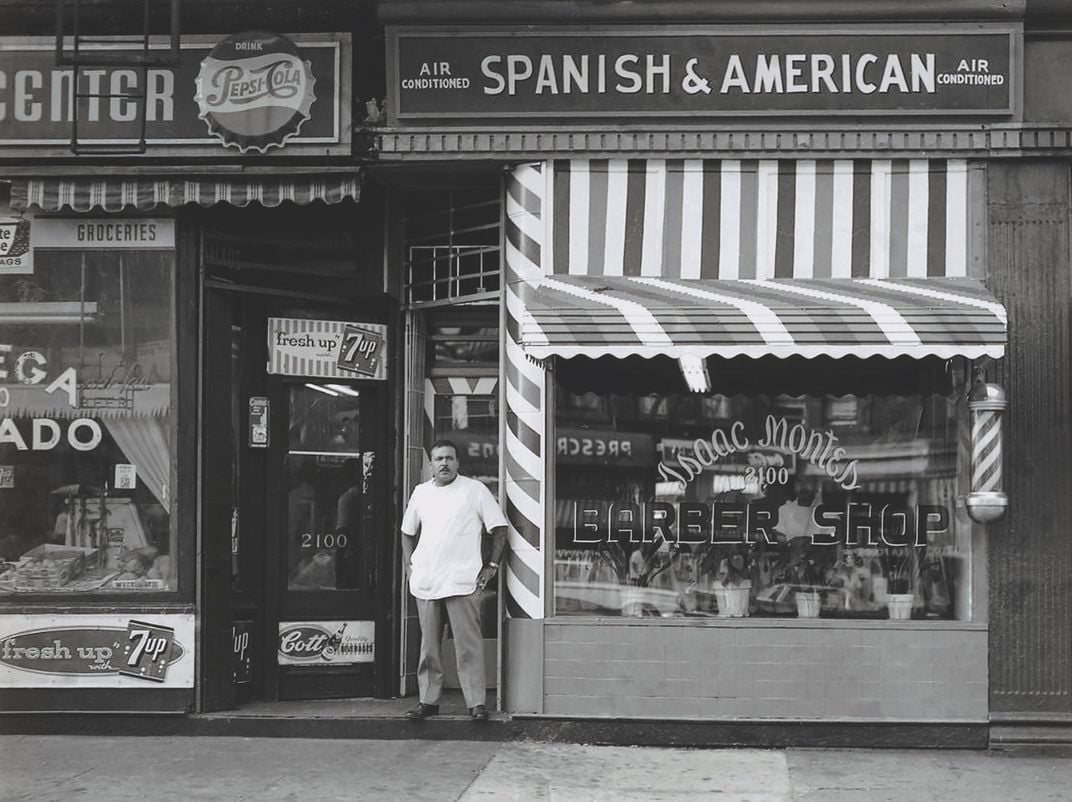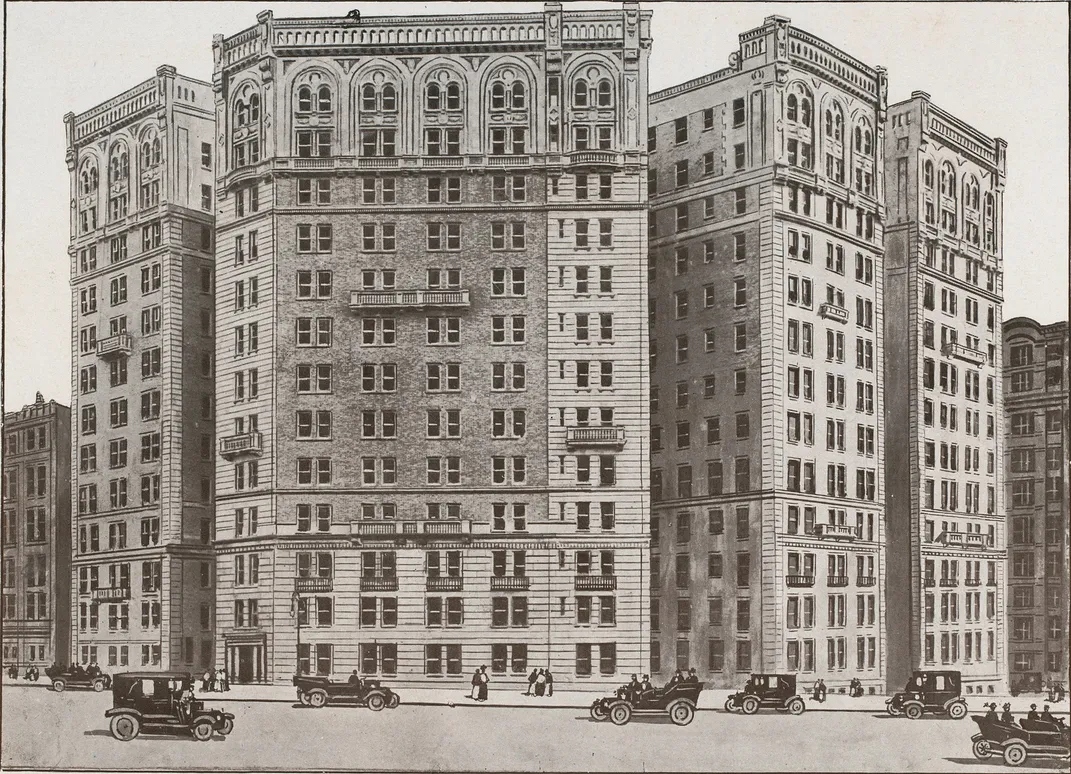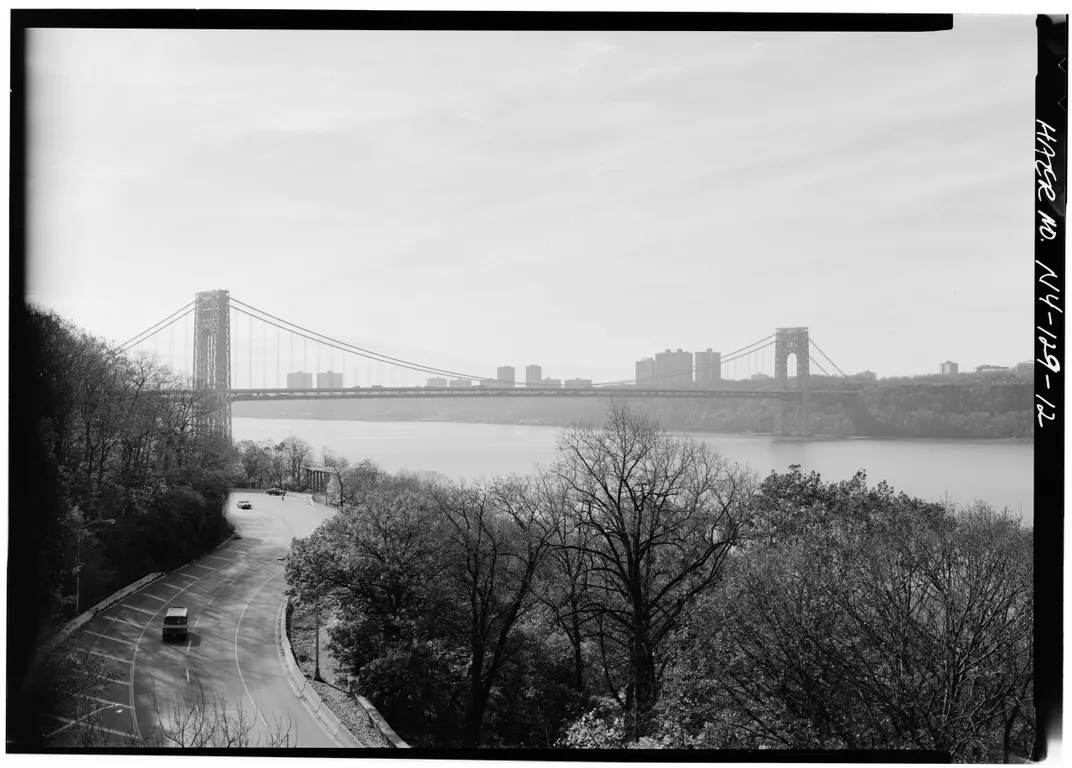The Immigrant History of the NYC Neighborhood Behind ‘In the Heights’
How Washington Heights, a community in upper Manhattan, became the heart of an award-winning musical and a hotly anticipated film adaptation
:focal(1234x479:1235x480)/https://tf-cmsv2-smithsonianmag-media.s3.amazonaws.com/filer/3c/a3/3ca3d400-75a2-4749-aa8c-bb953dc86ff1/rev-1-ith-trlr-0004_high_res_jpeg.jpeg)
The setting of Lin-Manuel Miranda’s In the Heights is as central to the musical’s plot as its characters. Home to a vibrant Latino community, Washington Heights, known colloquially as “Little Dominican Republic,” comes alive on stage and on screen, imbuing every scene with an unmistakable, pulsating presence. Situated in the northernmost part of Manhattan, between 155th Street and 195th Street, the neighborhood’s story is one of hardship, prosperity and communal spirit—themes aptly mirrored in the Tony Award–winning musical. The movie adaptation of In the Heights debuts in theaters and on HBO Max this week.
Involved in stage acting from an early age, Miranda says that it was the lack of Latino representation in Broadway and Hollywood that, in part, inspired him to create a work that shined a positive light on Latino immigrants, as opposed to the one-dimensional gang members seen in the classic 1957 musical West Side Story. As someone who grew up in Inwood, the neighborhood next door, that desire to break away from violent stereotypes was personal for Miranda. In the writing stages—he famously wrote the play during his sophomore year at Wesleyan University—he drew from his own life experiences to create something that was “honest,” and he talks about how many of his own life’s most important memories actually took place in Washington Heights, where he still lives today.
By the time Miranda was growing up, the neighborhood had long been considered a refuge for immigrants in search of the American dream. But when it was first developed in the 1800s, it was the area that wealthy New Yorkers called home. Regal estates, like that of famed naturalist John James Audubon, took advantage of the area’s rolling hills and waterfront views. In addition to the neighborhood’s physical beauty, it drew interest for its historical significance, having been the site of Fort Washington, a strategic point of defense in the Continental army’s efforts to protect New York from the British during the Revolutionary War.
By the year 1900, the face of Washington Heights began to change. As affluent families moved their estates south—developing alongside today’s Fifth Avenue and the Upper East Side—Washington Heights became an enclave for immigrants from Europe. The Irish, escaping the Great Potato Famine, settled in the neighborhood after the Lower East Side proved inhospitable. A few decades later, German Jews, fleeing anti-Semitism in the wake of the Nazi regime’s rise to power, arrived in Washington Heights in such numbers that the neighborhood became known as “Frankfurt-on-the-Hudson.” Later, immigrants from Greece, whose population in New York peaked in the 1960s, settled there.
But as these groups gained steadier footing in the city, they began trading in Washington Heights for more attractive real estate, creating the opportunity for a new wave of immigrants, this time from Latin America, to call the area their own. As documented by the Center for Puerto Rican Studies at Hunter College, roughly 4,000 Puerto Ricans migrated to the United States, each year, between the years of 1946 and 1956. As Europeans moved out and Puerto Ricans, Cubans, Mexicans and soon after, Dominicans, moved in, the neighborhood transformed into a largely Latino barrio, a characteristic that has held on through today.

Robert Snyder, a historian at Rutgers University, says that Dominican immigrants made such a deep impact on the area because they were quick to set up hometown associations, political organizations, sporting clubs and restaurants. What was particularly unique about the Dominican community, according to Snyder, was that, with the advent of air travel, they were also able to travel back home, send kids to their grandparents for the summer, and check in on businesses that were still based in the D.R., the Dominican Republic.
“They put one foot in the D.R. and one foot in N.Y.C.,” says Snyder, of the particular proximity that helped Dominicans set up a community whose sounds and smells—the ubiquity of Spanish, the presence of the Dominican flag, the botanicas selling fragrant incenses—were things that Dominicans brought along with them to New York.
Like the Cubans, the Mexicans, and the Puerto Rican immigrants that came before them, the Dominican community of Washington Heights arrived “looking to make their mark,” adds Ramona Hernandez, a sociologist and the director of the City College of New York’s Dominican Studies Institute. It was their determination to resist, combined with their “energy, that desire, that willingness to do whatever it takes to make it to progress,” she says, that lent a type of permanency to the area.
Small residential buildings, capable of housing multiple families within a single apartment, were characteristic of the neighborhood. With five or six floors each, these small buildings reminded Dominicans of the casitas back home, says Hernandez, who explains that those buildings were also what enabled so many Dominicans to actually concentrate in the same place. Upper Manhattan, including Washington Heights, possesses the largest population of Dominicans in all of New York.
As Latinos moved in, though, the conversation around Washington Heights started to change. “Once Latinos begin to move there, something interesting begins to happen,” explains Hernandez. Even though white residents started to leave the Heights for all kinds of reasons, she says, “the perception was that that you have a neighborhood that was in decline. When people leave, they take with them their businesses, what they brought in there. This was the vision you had back in the ’70s.”
As the manufacturing jobs that had attracted immigrants to New York began to disappear in the second half of the 20th century, the quality of life in Washington Heights began to decline. By the time the 1980s rolled around, the neighborhood became known as a breeding ground for drug dealers during the crack epidemic. In 1986, the New York City Police Department initiated “Operation Clean Heights,” an interagency initiative designed to eradicate the drug trade from the area vis-à-vis military-like tactics. But the efforts made little impact, with the NYPD deeming Washington Heights the city’s homicide capital three years later in 1989. That same year, the New York Daily News painted Washington Heights as a place where residents were forced to duck behind sofas to avoid being a hit by bullets from street side shootouts. A few years later, in an article for the Washington Post, journalist Malcom Gladwell described having to step “over scores of used plastic crack vials and the red, blue and yellow stoppers for them,” while reporting from Washington Heights.
“I always talk B.C.—Before Crack—because crack changed everything,” says Led Black, the Dominican American founder and editor of Uptown Collective, a newspaper dedicated to covering northern Manhattan. He says that as, as the epidemic waged on, “cops got dirtier, dealers became dirtier,” and the large amounts of money that were flowing into the neighborhood “compromised everything.”
Black, who proudly describes himself as not just “from Washington Heights but of Washington Heights”—he says that the first posters for the film version of In the Heights were photographed on his street—has been around for both the best and the worst moments in the history of his neighborhood. For him, a huge turning point for Washington Heights arrived in 1992, when the community came together to protest the NYPD’s killing of José “Kiko” Garcia, a 22-year-old Dominican immigrant who sold clothing for a living.
“The riots made everyone wake up to what was happening here, and that was the beginning of a new direction for the neighborhood,” says Black. Once again, residents of Washington Heights began to cultivate the area and, by the time the new millennium came around, younger generations were looking to give back to their community with newfound capital.

“By the 2000s,” says Black, the “sons and daughters of the barbershop owners and the salon owners started saying, “I love this community, let me do something for it.” So instead of people from the outside coming in to “rescue us,” we decided to do that for ourselves and we made this neighborhood for what it is now.”
It was in the beginning of this upward trajectory that Miranda began to pen his adaptation. Snyder says that Miranda’s celebration of the everyday elements that make Washington Heights extraordinary is what, for him, makes In the Heights so good. Although clearly part of American culture, these slices of life do not always get the recognition they deserve.
“For a long time, Broadway musicals have not sounded like New York City,” says Snyder. He applauds the film for displaying the “sights and sounds of the city” by “gloriously” putting the music of “Latino-and-African-American-New-York on the big screen.”
Those sights and sounds continue to make Washington Heights an attractive place—often times to its own detriment. In the last decade, the neighborhood—Snyder says it’s considered the “last, real Manhattan neighborhood”—has become susceptible to gentrification, and at risk of losing the Dominican community who made it what it is.
“People are starting to find out this is a wonderful neighborhood,” says Black. He credits Miranda for helping put Washington Heights “on the map,” but he’s clear that Miranda’s love is a product of “that same love we have for our own community.”
“Right now,” he concludes, “we’re on the cusp for the world to know how special Washington Heights is.”
/https://tf-cmsv2-smithsonianmag-media.s3.amazonaws.com/accounts/headshot/nili_2.png)


/https://tf-cmsv2-smithsonianmag-media.s3.amazonaws.com/filer/09/4b/094bae1c-77dc-463e-ac73-9846376a37df/nypldigitalcollections510d47d9-4eb0-a3d9-e040-e00a18064a99001q.jpg)


/https://tf-cmsv2-smithsonianmag-media.s3.amazonaws.com/accounts/headshot/nili_2.png)